by Abbie Horning | Stornaway Communications Manager, January 2023
DatingForward is an interactive story about sexual activity, HIV testing, disclosure and treatment. It is aimed at educating young adults and students on the impact of their choices around dating. This fantastic, behaviour changing interactive video has recently won two major interactive and design awards.
The production team was awarded a silver in the 2022 Academy of Interactive and Visual Arts’ “Davey Awards” competition and Design for Good category from Graphic Design USA.
Aimed at immigrant youth ages 18-25 years in the US, DatingForward allows viewers to make decisions and see the consequences of their choices play out.
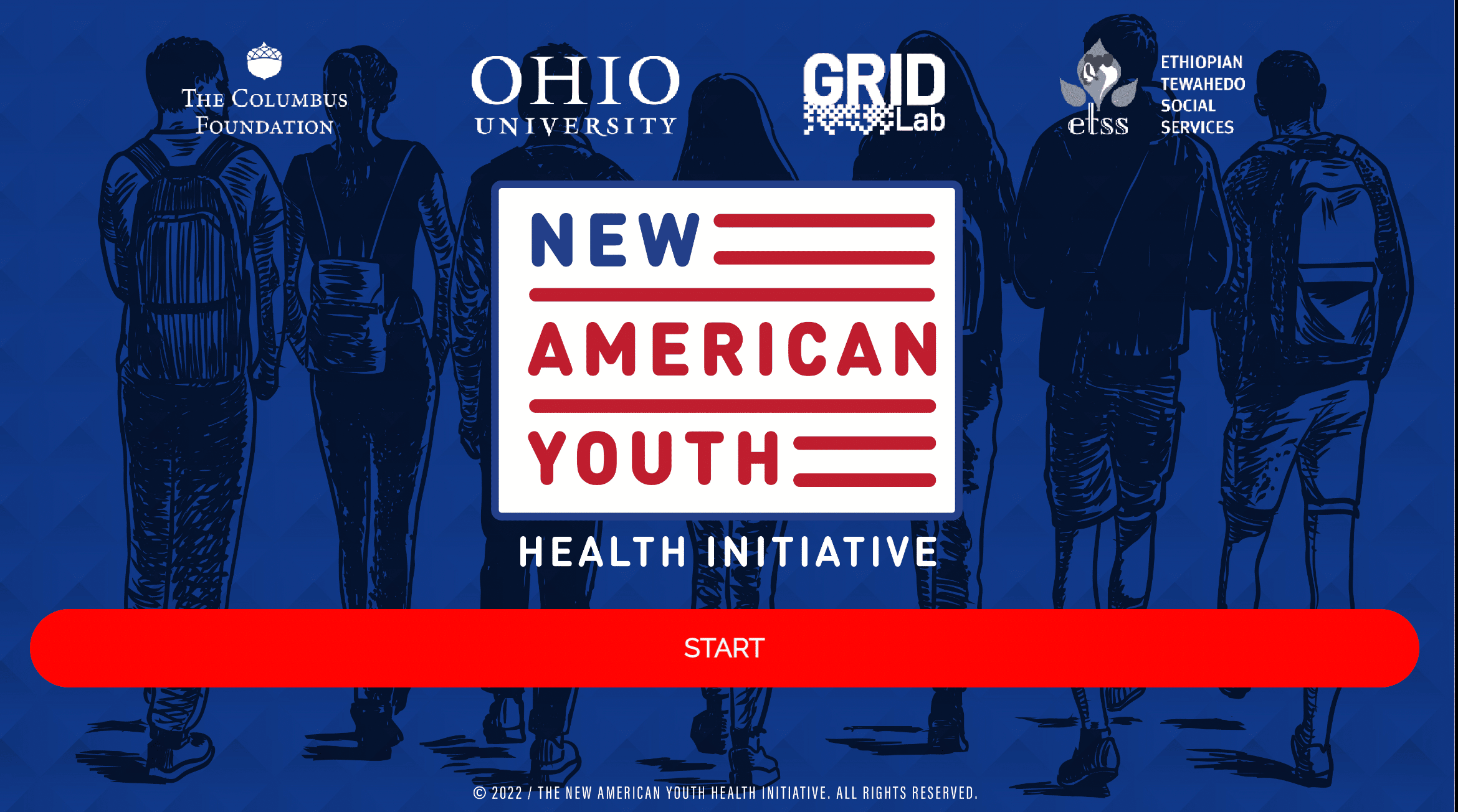
It was created by Ohio University Faculty members in collaboration with the College of Health Sciences and Professions, Ohio’s Game Research and Immersive Design (GRID) Lab and Ethiopian Tewahedo Social Services (ETSS). The ETSS is a well-known organization in Columbus serving new Americans and providing support to immigrant and refugee youth. The project was funded by the Columbus Foundation. Their mission is “to assist donors and others in strengthening and improving our community for the benefit of all its residents.”
“The simulation game incorporates evidence-based concepts from various behaviour change theories, including environmental influences around a behaviour, perceived severity, self-efficacy, behavioural capability, social norms, expectations, and perceived behavioral control.“ – Caroline Kingori, Ph.D., MP, Interim Associate Dean for Research and Faculty Affairs, Associate Professor & project executive producer.
Bringing you into the story: Creating a behaviour changing interactive video to play out the consequences of making life-changing decisions in a safe way
Stornaway is increasingly being used to help creators make choose-your-own-adventure style interactive games that bring the audience into the story.
The viewer makes decisions for the main character as they go through the process of HIV testing, disclosure and treatment. And so the young people get to experience the impact and consequences of these choices. Using three different scenes, the player watches sections of dialogue and interaction play out. After this, they can make decisions for the main character and then see the impacts of these choices. The young adults and students should feel that the scenarios playing out are familiar. With this in mind, the scenes are set up to be recognisable locations for young people. A club scene, a home “Netflix and chill” scenario and, maybe less familiar, a university Health clinic.

By going through each of the scenarios with the main character, the project allows the viewer to gain an understanding of the decisions they may be faced with regarding sexual activity, HIV testing, disclosure and treatment. Actually playing these scenarios through in a safe – consequence-free – environment has proven to be a great way to educate and train.
See more about using interactive videos for scenario-based learning initiatives.
Young adults represent 30% of new HIV infections – communicating with the target audience has never been more important
Figures currently show that teenages/young adults – those aged between 15 and 25 – represent over 30% of new HIV infections. This staggering figure alone stresses that something needs to be done to help educate this audience. The creative team decided to produce an interactive game – more specifically, a behaviour changing interactive video – in order to reach their young demographic.
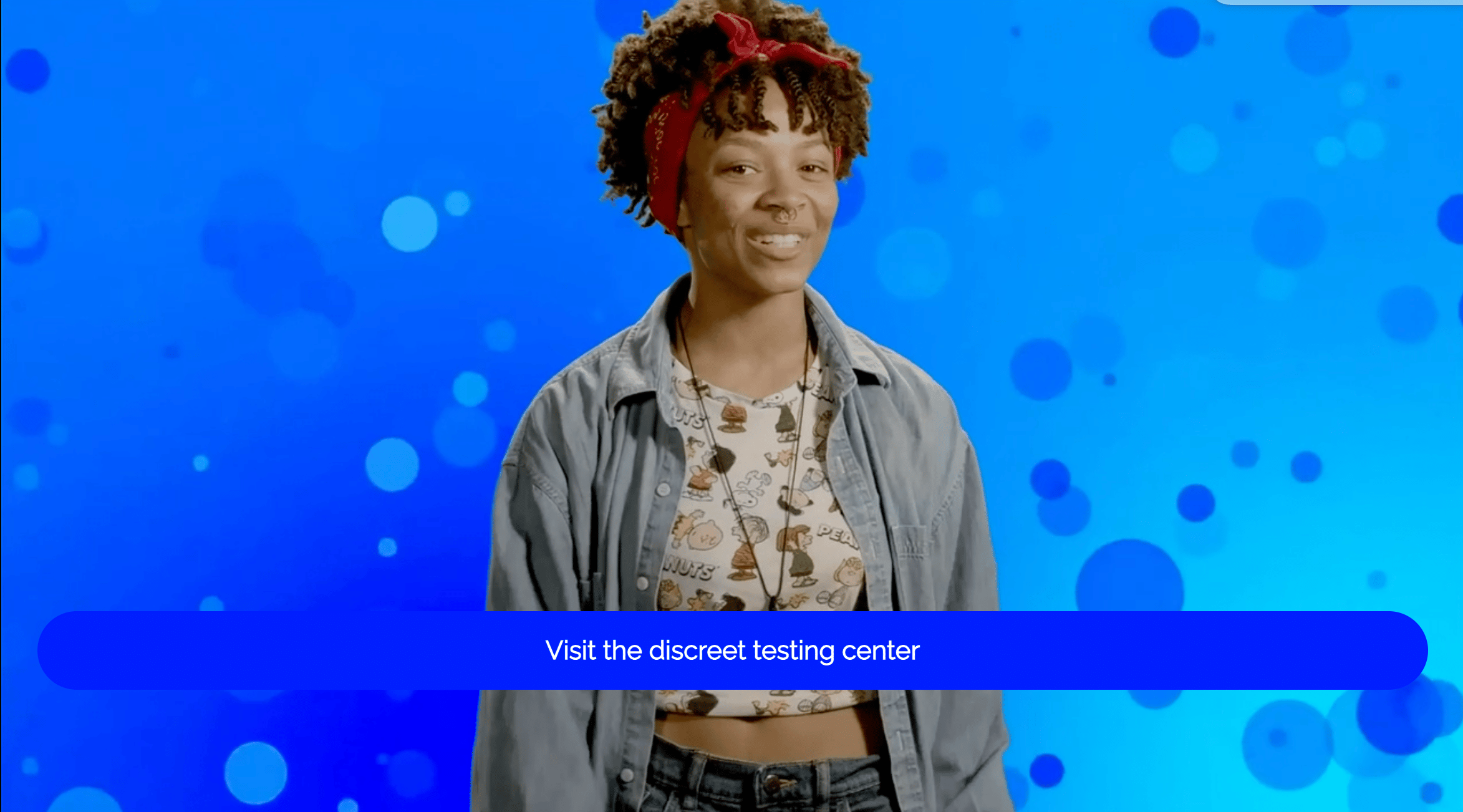
Working with Ethiopian Tewahedo Social Services, the project sought to speak directly to immigrant youth ages 18-25 years in the US.
“Development of a contextually appropriate gaming technology intervention to increase HIV prevention and treatment knowledge is vital in engaging youth, given that adolescent and young adult populations ages 15-25 represent over 30 percent of new HIV infections globally. Furthermore, little is known about barriers to accessing sufficient HIV knowledge and services among immigrants.” – Caroline Kingori
DatingForward was produced with three aims in mind:
- To increase knowledge about HIV testing, condom use, and HIV transmission routes and care services;
- To decrease unsafe sexual behaviour, e.g., unprotected sex with multiple partners
- To decrease HIV-related stigma against people who are HIV positive among 18-25-year-old immigrant and refugee youth in Central Ohio.
Creating the project in Stornaway allowed the team to focus on being creative – collaborating across the board and educating their viewers
Caroline Kingori, associate professor of community and public health, Adonis Durado, assistant professor in the School of Visual Communication, and core members of the Game Research and Immersive Design (GRID) Lab worked together to create an immersive, interactive, educational project.
Using Stornaway, the team were able to map out the project. Following this, they could utilise the map within the scripting process. And playtest and collaborate across the project team throughout the production.
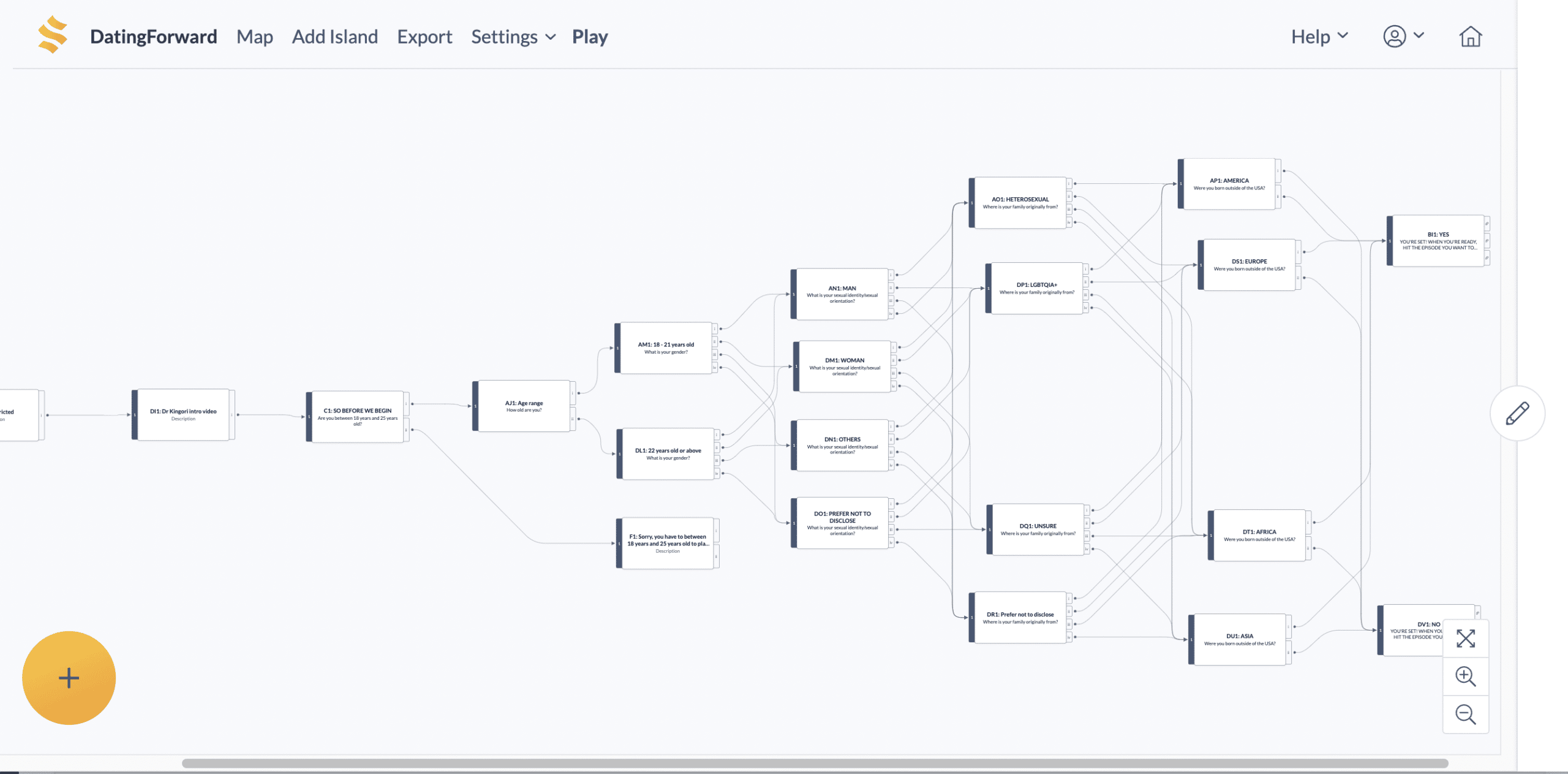
“The project team was able to view and suggest/make changes throughout the production process. Also, when piloting with the target group, the majority were able to access Stornaway with limited challenges.” – Caroline Kingori.
All of which was vital to ensuring the success of such an innovative way to deliver this sort of necessary information.
The next steps for this award-winning behaviour changing interactive video
With two award wins, the project has already proved to be hugely successful. Winning silver in the 2022 Academy of Interactive and Visual Arts’ “Davey Awards” competition and Design for Good category from Graphic Design USA.
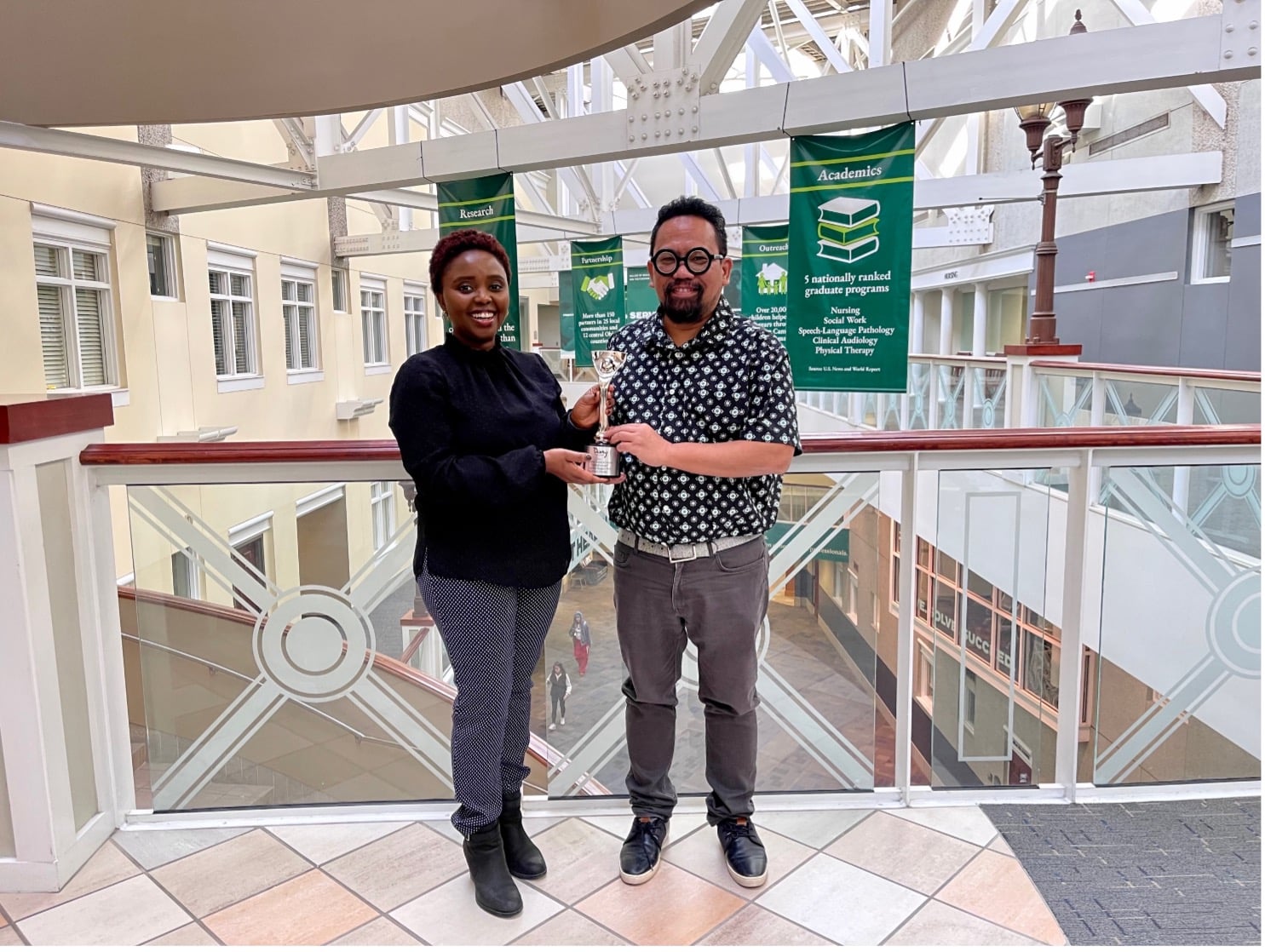
Creators of DatingForward – Kingori and Durado – with the Davey Awards Plaque
But this is just the beginning for the team! The next steps are about getting this behaviour changing interactive video into the hands of more people.
Using Stornaway’s unique story map duplication, the team plan to expand the project to be even more inclusive by creating multiple versions – aimed at other sexualities with multiple language options.
There are also plans that see the project incorporated into teaching curriculums and delivered directly to students in classrooms and young adults in the community.
Stornaway.io key features used
Mapping out the project ahead of production
When setting out to make an interactive story or game, the first challenge is how you map out your idea. Putting pen to paper and trying to join the expansive story together, it can be easy to get lost!
We’ve tried wall maps with string, floor maps with arrows … eventually, it all becomes too confusing.
With Stornaway, you can clearly map out your idea from initial conception through to final export. And using our patented island system, you – your audience and collaborators – won’t ever get lost.
Playtesting
The platform is controlled by you. Simply clicking Play will allow you to immediately playtest. So even before you have any video to upload, Stornaway.io will let you play whatever you’ve planned out, using placeholder videos, images or even text.
This previz is one of Stornaway’s most powerful features. So you no longer have to wait until the end to see how your project plays, when it’s too late to change it. In short, you can instantly see how your audience will experience it your project.
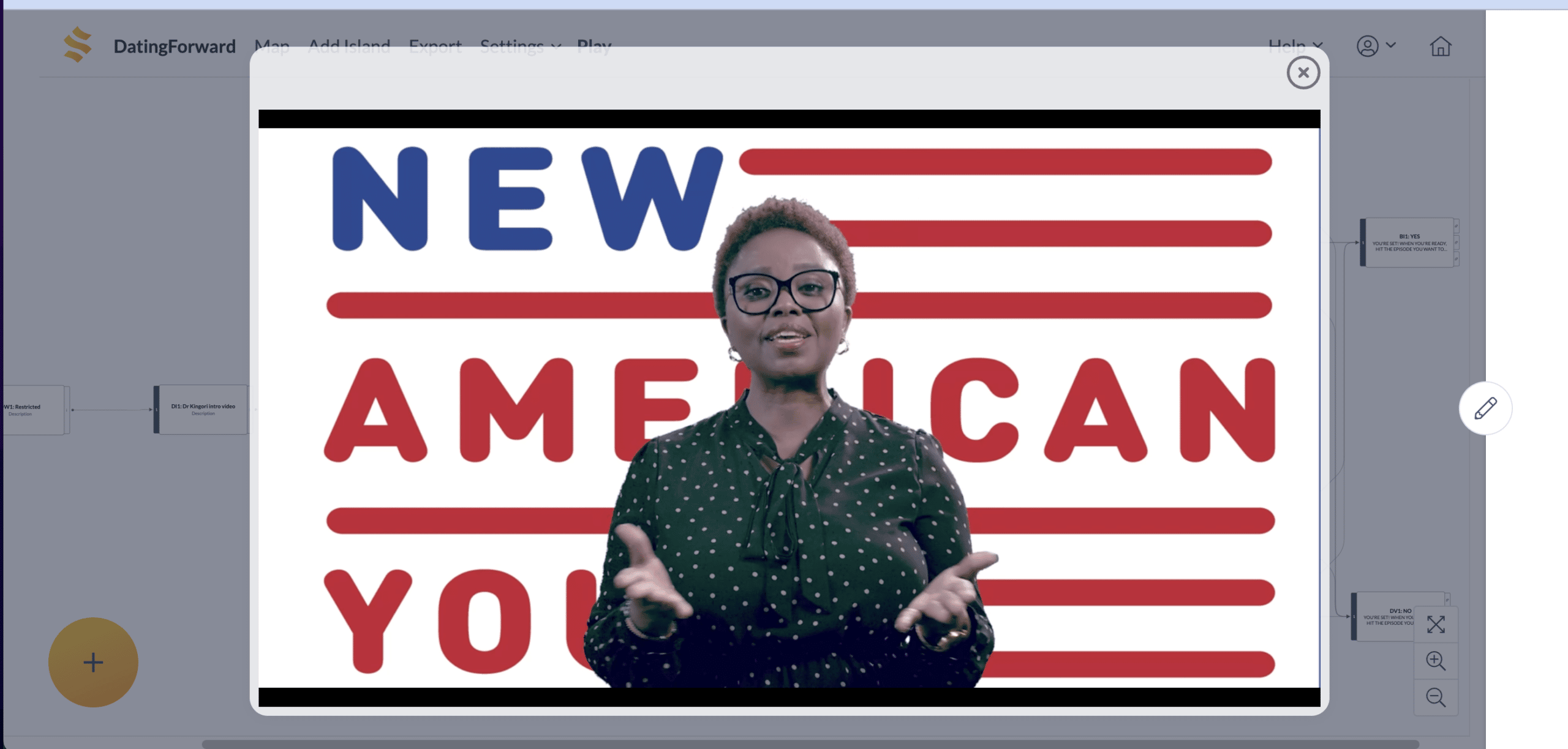
Collaborate across the project team throughout the production
Stornaway was made to be completely user-friendly and intuitive. Therefore, anyone in any company can learn how to use the platform and create interactive videos within minutes. And then our collaboration feature lets you share privately with your team, production company or distributors for review and feedback.
We can’t wait to see what the project team do next – DatingForward 2.0!
This educational, immersive, interactive project has big plans for the future. Indeed, with two award wins under its belt, this collaborative project is already making a huge mark and looks set to continue making waves with the team’s future plans.
What next?
To find out more about creating behaviour changing interactive videos, see our page on interactive scenario-based learning videos.
Or select an option below:
